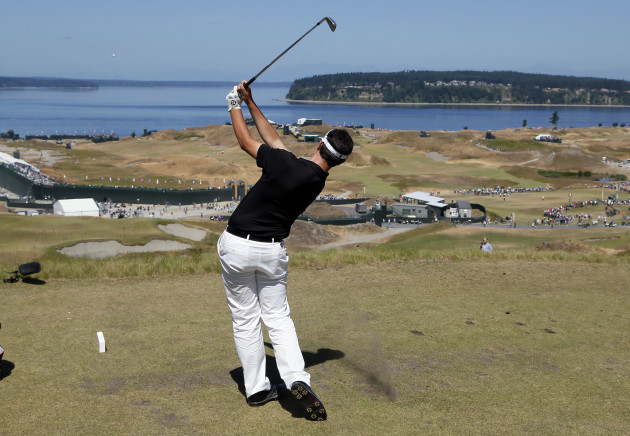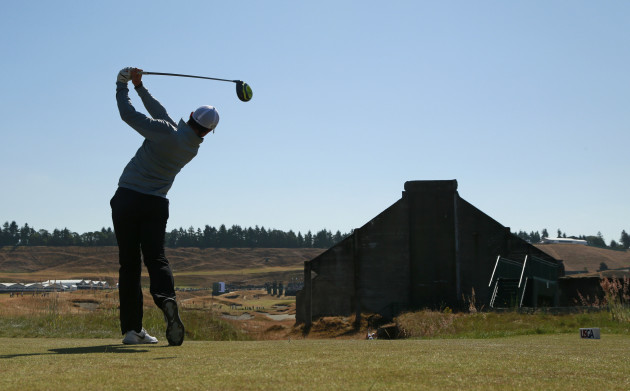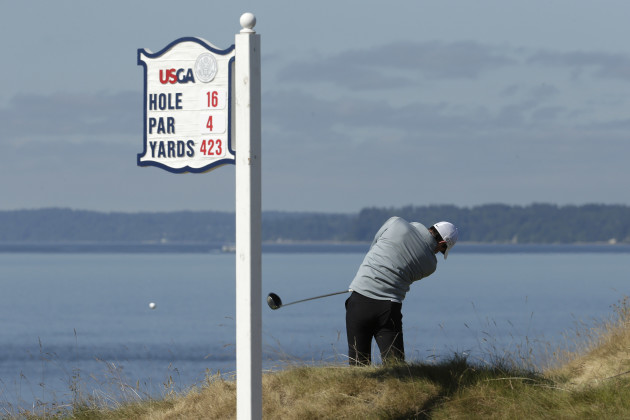THE US OPEN enters virgin territory after 120 years of history at Chambers Bay golf course this week, but US Golf Association (USGA) chief Mike Davis believes it will all come down to the players at the end of the day.
It’s the first time the year’s second major has been staged in the US Pacific Northwest and the quirky links-style layout south of Seattle has left many of the world’s top golfers scratching their heads on how to play it.
It is more of a British Open seaside type course than a traditional US Open venue, with its dunes and bunkers, bouncy, undulating fairways, blind shots and large greens.
But unlike the classic British Open venues, it has a 500-foot elevation from the lowest to the highest point of the course, opening and closing holes which can either be par-4 or par-5 and oddly sloping tee zones.
The record dry sunny weather that has marked the last few weeks in the area also means that the fairways are firm and fast and the greens devlish to read.
Scoured out of a disused sand and gravel quarry overlooking the scenic Puget Sound, Chambers Bay opened just eight years ago and most of the top players have seen it for the first time this week.
The reviews have been mixed.
Some players believe it’s nasty and needless. Others see it as a challenge. Everyone agrees though that it is different.
Davis, who was instrumental in bringing the US national championship to Chambers Bay as part of the USGA’s policy of introducing the tournament to new catchment areas, agreed that there were anxieties over how the course would perform.
But he insisted that every step had been taken to ensure a true and fair test of golf and that essentially, the players would be the story, not the course.
“One of the things that I think many of you probably heard from player interviews or just your own observations, there’s some that are absolutely effusive about this architecture,” he told journalists on the eve of the tournament.
“There are some that would say what are you doing in the United States conducting a British Open. There are others that don’t know what to think, other than it’s very unique.
“But what I will say is what we try to do at the USGA with all of our championships is to truly bring them to some of the best golf courses in the United States, and this indeed does qualify for that.
“It’s very different. It’s wide. There’s more elevation change than any Open we’ve seen. It’s got the firm and fast thing.
“This going to be a very, very different US Open.”
Turning to the final plans for how the course would play Davis said that the overall length would be between 7,300 and 7,700 yards, depending on the conditions, and that green speeds would be kept at between 11 and a half and 12 on the Stimp meter.
But at the end of the day he said it would come down to the players and not the course to decide who would win.
“Listen, we don’t know how the players are going to perform, really,” he said.
“There could be a runaway like Tiger Woods winning by 15 strokes in 2000. Or look what Martin Kaymer did last year (won by eight strokes).
“Or it could be nip and tuck right to the end. That’s the players that determine that, not the USGA.”




